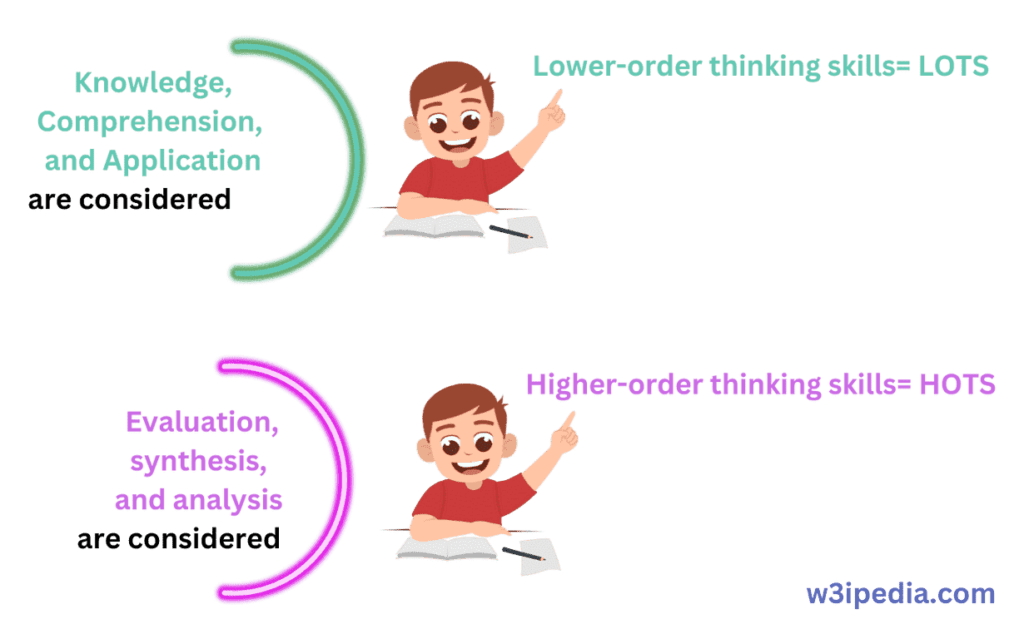Table of Contents
ToggleBloom’s Cognitive Taxonomy
Learning and improving mental abilities are part of the cognitive domain (Bloom et.al, 1956). Six key areas make up Bloom’s taxonomy’s categorization of the cognitive domain: knowledge, comprehension, application, analysis, synthesis, and evaluation.
- The cognitive domain includes learning and the development of cognitive abilities (Bloom et.al, 1956).
- This comprises the ability to recall or recognize particular facts, logical sequences, and conceptual frameworks that support the growth of intellectual capacities and talent
- Six main categories make up the framework developed by Bloom and his collaborators: knowledge, comprehension, application, analysis, synthesis, and evaluation.
- These classifications span from the most basic behavior to the most complicated.
- The classifications might be seen as varying degrees of difficulty. In other words, the first ones typically have to be mastered before the future ones may happen.
Levels of Bloom’s Taxonomy (1956)

Some Bloom’s taxonomy users emphasize the framework’s hierarchical structure more, claiming that the first three components

Because of this, the taxonomy is frequently illustrated graphically as a pyramid with higher-order cognition at the top.
Learning levels in the cognitive domain:
1. Knowledge:
Entails remembering particulars and general principles, remembering techniques and procedures, or remembering a pattern, structure, or context.
2. Comprehension:
“Refers to a form of understanding or apprehension such that the person knows what is being said and may use the material or idea being transmitted without necessarily linking it to other material or understanding its full implications.”
3. Application:
An application is defined as the “use of abstractions in specific and concrete contexts.”
4. Analysis:
The analysis is defined as “the breakdown of a communication into its constituent elements or sections such that the relationships between concepts given are made plain and/or the relative hierarchy of ideas is made obvious.”
5. Synthesis:-
Synthesis is the “putting together of materials and parts so as to produce a whole.”
The outcome of the examination is “Judgments on the worth of material and procedures for certain objectives.”
6. Evaluation:-
“Judgments on the worth of material and methods for certain purposes” result from the evaluation.